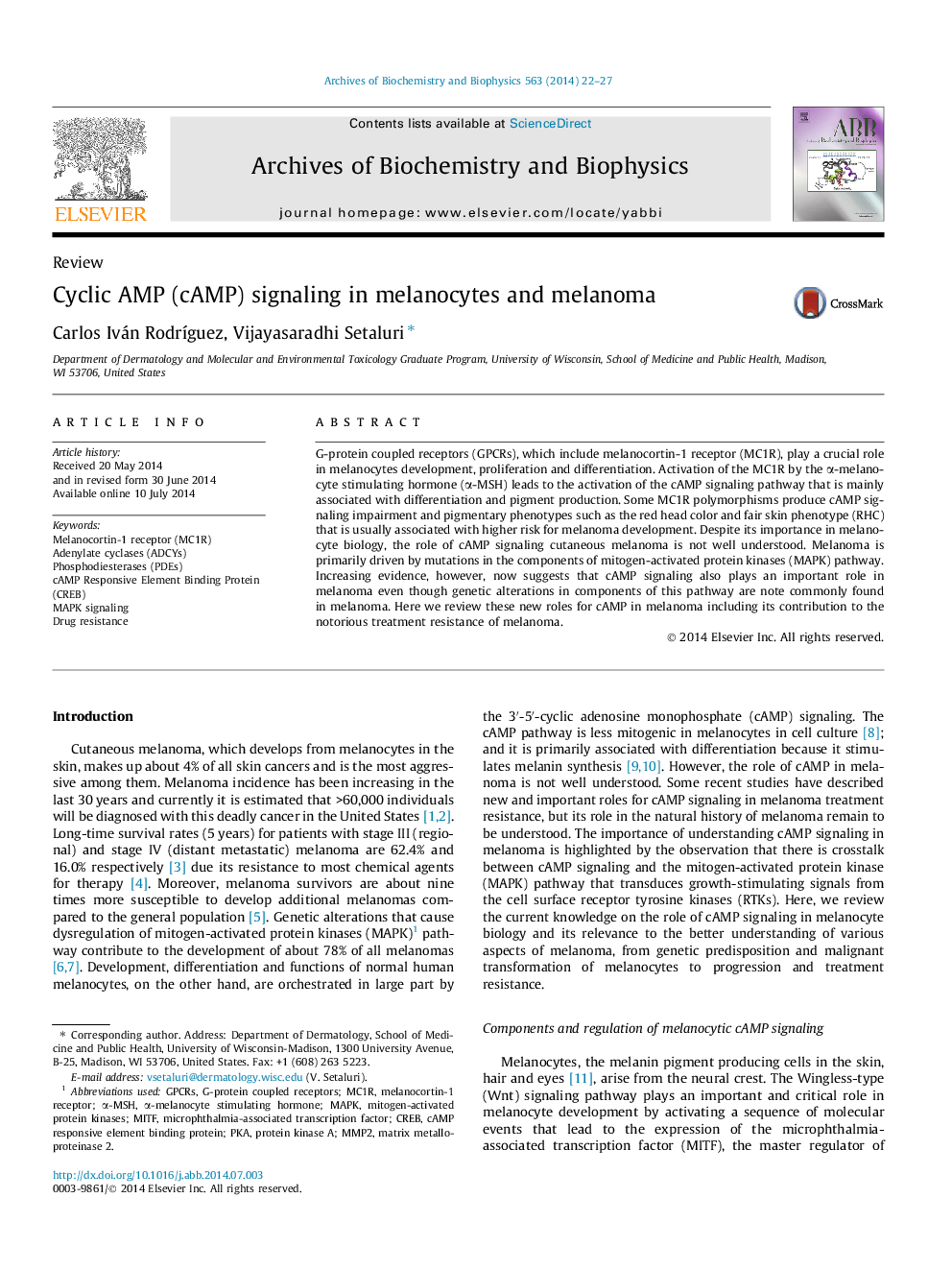| Article ID | Journal | Published Year | Pages | File Type |
|---|---|---|---|---|
| 1924989 | Archives of Biochemistry and Biophysics | 2014 | 6 Pages |
•Cyclic AMP signaling plays important roles in melanocyte biology.•Genetic alterations in cAMP signaling pathway have not been reported in melanoma.•Contradictory roles for cAMP signaling in melanoma have been reported.•Recent studies point to a role for cAMP in melanoma resistance to targeted therapy.•Role of cAMP in melanoma development and progression is not understood.
G-protein coupled receptors (GPCRs), which include melanocortin-1 receptor (MC1R), play a crucial role in melanocytes development, proliferation and differentiation. Activation of the MC1R by the α-melanocyte stimulating hormone (α-MSH) leads to the activation of the cAMP signaling pathway that is mainly associated with differentiation and pigment production. Some MC1R polymorphisms produce cAMP signaling impairment and pigmentary phenotypes such as the red head color and fair skin phenotype (RHC) that is usually associated with higher risk for melanoma development. Despite its importance in melanocyte biology, the role of cAMP signaling cutaneous melanoma is not well understood. Melanoma is primarily driven by mutations in the components of mitogen-activated protein kinases (MAPK) pathway. Increasing evidence, however, now suggests that cAMP signaling also plays an important role in melanoma even though genetic alterations in components of this pathway are note commonly found in melanoma. Here we review these new roles for cAMP in melanoma including its contribution to the notorious treatment resistance of melanoma.
